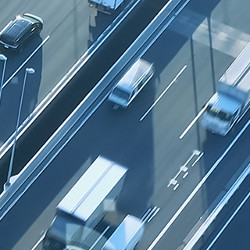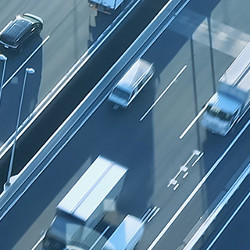
Americans wasted a whopping 3.4 billion hours in 2021 thanks to traffic, according to research from connected car analytics company INRIX, which also noted that this equates to 36 hours lost per person. The numbers are clear: Even with drops in traffic thanks to new travel patterns in the wake of the pandemic, we still lose an entire workweek each year to traffic.
Soon enough, artificial intelligence (AI) may be able to alleviate—or fully solve—the problem.
Today, researchers and companies are working to develop AI-powered systems that tackle the problem of traffic from a number of angles.
For instance, Intelligent Traffic Control of Tel Aviv, Israel, has developed a solution that collects data from traffic cams, then regulates traffic signals to optimally route vehicles. Paradigm Traffic Systems of Texas offers a range of traffic management products to manage intersections and freeways.
However, a team of researchers at the U.K.’s Aston University has taken things one step further. Their AI traffic regulation system does not just use data from existing traffic cams to manage vehicle flow at a specific intersection; it has learned, from a traffic simulation, how to optimally regulate traffic in real time at real-world intersections—even in traffic situations it has never seen before.
These capabilities are all made possible thanks to advancements in a number of different AI fields, including computer vision, machine learning, and deep learning.
At its core, AI looks to automate some of the steps of the human decision-making process in traffic management, such as detecting vehicles or identifying problematic traffic patterns.
Many of today’s AI traffic management solutions focus on the detection and classification of traffic, says Maria Chli, a researcher at Aston University who works on AI for traffic management. That means learning to recognize different types of road users, such as distinct types of vehicles and pedestrians, by processing data from magnetic loops buried in road surfaces, traffic cameras, and LiDAR systems. These detection and classification systems are often coupled with simulation technologies so they can quickly and easily use what they capture to model that information in order to teach traffic management systems how to identify traffic patterns, detect incidents, and monitor a variety of road conditions.
“These types of technologies work on top of the existing tech stack of cars, roads, and traffic lights, but seek to make the optimal interventions that reduce car waiting times, emissions, and energy consumption,” says George Vogiatzis, a computer vision researcher at Aston University who also works on AI traffic management systems.
If they work as intended, AI-powered traffic management systems could save humanity billions of hours every year, and significant amounts of fuel.
Managing Traffic Patterns
A suite of interlocking technologies makes today’s AI-powered traffic management technology possible. In fact, Chli and Vogiatzis have developed an AI system that Aston University says is the “first of its kind.” Other solutions on the market today rely on “manually designed phase transitions” to regulate traffic, while this one uses deep reinforcement learning.
First, advanced AI-powered computer vision and sensor technologies, like radar and LiDAR, are required to process visual information on the road, including the behavior and speeds of cars, as well as other road-sharers such as bicycles and pedestrians. Yet they don’t just keep tabs on traffic participants on a given road or at a given intersection; AI can also review traffic participants in CCTV footage to get a holistic view of overall behavior in the entire traffic system and make traffic regulation decisions accordingly, says Vogiatzis.
From there, says Chli, deep reinforcement learning trains a machine learning system to automatically control traffic on its own. It does that by using a mathematically rigorous trial-and-error approach to process the visual data captured by cameras and sensors, understand how traffic patterns work, and grow progressively smarter about traffic behavior and patterns, which allows it to make highly accurate predictions about how to regulate traffic based on those behaviors and patterns.
“Deep reinforcement learning has been shown to discover management solutions significantly more efficiently than those humans have been developing, while at the same time factoring in a much richer set of parameters, including the weather, environmental and air-quality measures, and a larger set of road users,” Chli says.
In fact, Chli and Vogiatzis recently presented research on the AI traffic management system they developed, which uses deep reinforcement learning to effectively regulate traffic at any given intersection after it has been trained on that intersection.
Anyone who has been stuck at a painfully long traffic signal already understands the limitations of manually designed traffic lights. In fact, poorly timed signals are not just a frustration; they’re a major source of traffic jams, because they’re manually programmed with timing based on historical traffic patterns at an intersection. That works decently well enough when traffic patterns conform to the norm, but when there is an accident, congestion, or a weather event that changes traditional patterns, your typical traffic signal doesn’t adapt, leading to traffic congestion.
The system Chli and Vogiatzis created aims to use the unique strengths of AI to do better. Instead of being programmed with instructions, the system teaches itself to recognize traffic patterns and autonomously adapts its approach to continually make progress in regulating traffic efficiently. It does that by processing live camera footage and changing traffic signal patterns to increase traffic flow and reduce traffic jams.
The system functions based on a reward system. The system gets a reward when it successfully directs a vehicle through an intersection. When there are traffic delays, it receives a penalty. The system uses these incentives to optimize how traffic is managed.
What’s more, the system does not need live traffic footage to learn how to regulate traffic at an intersection. Chli and Vogiatzis also built a photo-realistic traffic simulation program called Traffic3D, which can be used to train the AI traffic management system. For instance, the researchers could train their AI system to regulate traffic in very bad weather simply by simulating different weather conditions like rain or hail, so the system learns how to adapt to those conditions in the real world.
In fact, the program can look at any traffic intersection, in the real world or a simulation, and learn on its own how to regulate traffic in that intersection.
Chli and Vogiatzis expect to start deploying the system across cities in the next several years.
“We’re partnering with local authorities and smart technologies firms to deploy a set of on-the-road trials in autumn or winter of 2022,” says Chli. Shortly thereafter, says Vogiatzis, they hope to see rapid deployment of fully autonomous traffic controllers in individual intersections.
The Road to Smart Cities
It is still early days for traffic management AI. Today’s capabilities are extremely promising, though systems like the one developed by Chli and Vogiatzis will take time to fully deploy at individual traffic intersections.
However, once they do, AI for traffic management at intersections is just the tip of the iceberg.
The next frontier is applying today’s capabilities to tomorrow’s challenges, and one challenge looms large: using AI to regulate traffic in entire cities, creating fully autonomous smart transportation networks that eventually interface with fully autonomous vehicles. In the process, researchers hope to make truly smart cities possible.
“Smart city” is the catch-all term used to describe the concept of an urban area built from the ground up to leverage sensors and AI to function optimally. This goal can be reached by deploying dozens of core technologies across aspects of city life, from traffic management AI to self-driving cars to deep learning systems that regulate roads and thoroughfares.
Today, dozens of major technology companies have smart city initiatives in the works. That includes Alibaba’s City Brain, which uses AI to manage entire cities, and Sidewalk Labs, a Google subsidiary that applies technology to urban infrastructure challenges.
The main difficulty in regulating traffic at the city level is computational, says Vogiatzis. The task of regulating traffic in more than a few intersections, not to mention an entire urban area, becomes enormously complex very quickly. However, he believes significant progress toward that goal will be made in the next three to five years.
“I believe we can build AI that can automatically regulate traffic across entire cities,” he says. If his prediction comes true, you can expect more than just better-regulated traffic. Successfully automating traffic regulation across an entire city opens up a range of creative possibilities to improve how cities function.
“One of the most exciting things about this is that AI can optimize for a variety of factors and not just traffic times,” he says. “For instance, we can have traffic-regulating AI that makes traffic-control decisions with a view to improve air quality in our cities, and improve conditions for vulnerable road users like cyclists and pedestrians.”
However, even once the technology matures, other factors could prevent speedy adoption. As autonomous traffic and transportation systems proliferate, they raise important questions—such as those about who is at fault when an accident occurs due to an algorithm’s decision-making. Failure to resolve such questions, says Vogiatzis, will hold progress back.
“Even though the potential for these technologies is enormous, there are significant social and political challenges with the adoption of fully autonomous transport solutions, which means we will be living with our current, perhaps electrified, transport infrastructure for some years to come.”
AI traffic light system could make traffic jams a distant memory, Aston University, May 10, 2022, https://bit.ly/3RNSLtj
Chli, M. et al,
Fully-Autonomous, Vision-based Traffic Signal Control: from Simulation to Reality, May 9, 2022, https://publications.aston.ac.uk/id/eprint/43543
Chli, M. et al,
Traffic3D: A Rich 3D-Traffic Environment to Train Intelligent Agents, https://bit.ly/3NXK4vG
Traffic jams are just a math problem, says Israeli AI firm, The Japan Times, May 29, 2022, https://bit.ly/3AXwGBH





Join the Discussion (0)
Become a Member or Sign In to Post a Comment